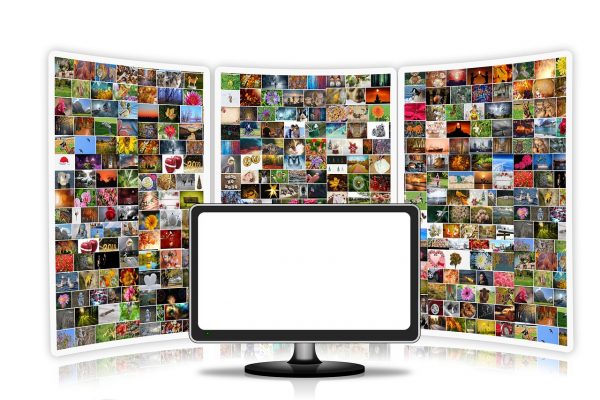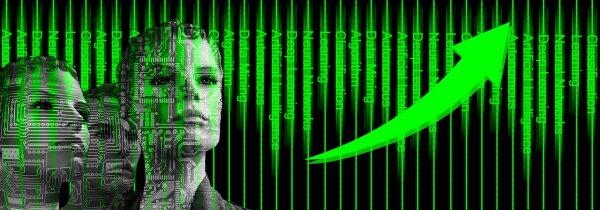What Is Deep Learning?
Deep learning is an artificial intelligence that mimics the workings of a human brain in processing different data, creating patterns and interpreting information that is used for decision making. It is a subfield of machine learning in artificial intelligence. Its networks has the capability to learn, supervised or unsupervised, from data that is either structured or labelled.
How Does Deep Learning Work?
Deep learning applications use an artificial neural network that’s why deep learning models are often called deep neural networks. The term “deep” refers to the number of layers hidden in the neural networks. A traditional neural network contains only 2-3 hidden layers while deep networks can contain as much as 150 hidden layers. A deep neural network is composed of neurons grouped in three different layers: input, hidden and output. The input layer receives the input data. It then passes the inputs to the hidden layer(s). The hidden layers perform all mathematical computations on the inputs. The calculation depends on the weight of each input value. Once calculated, the output layers returns the output data.
Types Of Deep Learning
There are two types of deep learning, supervised and unsupervised. Supervised learning is when you give an AI a set of input and tell it the expected results. Basically, if the output generated is wrong, it will readjust its calculation and will be done repeatedly over the data set until it makes no more mistakes. Unsupervised learning is the process of machine learning using data sets with no structure specified. Applications of deep learning have been applied to several fields including speech recognition, social network filtering, audio recognition, natural language processing, machine translation, bioinformatics, computer design, computer vision, drug design, medical image analysis, board games programs and material inspection where they need to produce results that are comparable to or superior to human experts. Let’s go over more details on applications of deep learning and what can deep learning do.
Top 15 Applications Of Deep Learning
1. Machine Translation
Thanks to deep learning, we have access to different translation services. One of the most popular one, Google Translate helps its user to easily translate a language. No need for complicated steps, deep learning has helped this application improve tremendously. From just typing a word, to pronouncing a word, it sure is a big improvement from what is started out to be. These improvements can be traced back to the use of recurrent neural network that showed remarkable results in being able to translate languages. And as technology progress, deep learning algorithms partnered with availability of data will help machine translation to continue evolve.
2. Virtual Assistants
The most popular application of deep learning is virtual assistants. From the likes Siri, Alexa and Google Assistant, these digital assistants are heavily reliant on deep learning to understand its user and at the same time give the appropriate response in a natural manner. Each interaction to the assistant provides them the opportunity to understand the voice and accent of its user and study the behavior of the user. Virtual assistants uses deep learning to know more about their subjects ranging from your favorite places to your favorite songs. Furthermore, virtual assistants are being incorporated to other devices ranging from cars and even microwaves. And thanks to smart devices and the internet, these assistants will continue to get smarter.
3. Customer Service
Chatbots are everywhere and you have surely encountered one. Deep learning has played a major role in helping businesses by improving customer service and making it more accessible to its customers. Trained with large amount of data, chatbots can understand customer requests and also guide the customer and help them resolve their problem in a human-like manner. Plus, it saves up customers time and brings down the costs of business. Hoping that more businesses will take advantage of this to a better customer service.
4. Self-Driving Cars
We are definitely living in the future we all dreamed of. Because of deep learning, self-driving cars do exist and is just going to keep on improving over time. Although it hasn’t been made available to public yet, The Uber Artificial Intelligence Labs at Pittsburgh is not only working on making driverless cars, but also integrating food delivery option with the use of this new invention. Millions of data is being fed to the system to build a model, train the machine to learn and then test the result in a safe environment. Data are coming from cameras, sensors and geo-mapping creates sophisticated models that can navigate through traffic and identify paths and signs. Hopefully, these self-driving cars can be able to handle driving in an uncontrolled environment.
5. News Aggregation
Everyone has encountered fake news one way or another. The Cambridge Analytica is a classic example of how fake news influence its readers’ perception. Deep learning helps develop classifiers that can detect fake or biased news and remove it from your feed. On the other hand, news aggregation is the effort of customizing news depending on the readers’ persona.
6. Digital Marketing
Everything is transitioning to digital now, even marketing. Traditional marketing isn’t that in-demand anymore and most businesses are taking advantage of the internet. The application of deep learning in digital marketing helps marketing professionals gauge the effectiveness of their campaigns. It is revolutionizing the marketing industry by relying on data and its output. The accurate predictions of deep learning algorithms predicts customer demand, customer satisfaction and help them create a specific target market depending on their brand. It is truly becoming an invaluable asset for the modern marketing professional and keeping their services competitive.
7. Natural Language Processing
One of the hardest task that human can learn is understanding the complexities associated with language. Whether its semantics, syntax, tonal nuances, expressions or even sarcasms, humans find it hard to easily grasps learning a language. In deep learning, machines are trained to achieve the same thing and develop human-like response and personalized expressions. It is also trying to catch linguistic nuances and answer questions. It is also training machines to build phrases and sentences and capture local word semantics with word embedding.
8. Colorizing Videos and Images
Who knows that machine can actually have a creative side? Thanks to deep learning frameworks, machines can flaunt their creativity by adding color to old black and white photos and videos. This application has captured the hearts of the older generation by giving more life to a memory they never thought to see in color again. This might not sound as important as the other applications, but there are certain benefits for this. This application was able to color footage from the world war 1, although footage is not that significant, this could help uncover some new information.
9. Entertainment
Have you ever felt that Spotify and Netflix recommends you exactly the things you like? Deep learning is the main reason for that. It plays a major role in understanding its consumers’ behavior and generating recommendations to help them make choices for product and services. The more you interact with these applications, the more they gather information and suggest better options for you.
10. Visual Recognition
Another application of deep learning is visual recognition. Pretty sure you have encountered this though your social media application or in your smart phone. Basically, it sorts out images based on locations detected in photographs, a combination of people or depending on dates or events, etc. When searching for a particular photo from a Google’s picture library, it requires a state-of-the-art visual recognition systems consisting of several layers ranging from basic to advanced elements. Surely making everyone’s life easier especially the growing amount of photos taken.
11. Healthcare
Deep learning has been playing an important role in medical diagnosis and research. It helps with diagnosis of life-threatening diseases, pathology results and treatment cause standardization and understanding genetics to predict future risks of diseases. Readmissions are a huge problem in the healthcare industry and deep learning is helping to combat this. Although, some medical practitioners are still skeptical about the use deep learning in the field of medicine.
12. Personalization
Some people tend to creeped out by personalized touch but nothing to worry as the data it collects are all from your previous interaction from the website or application.
13. Fraud Detection
The banking and financial sector also benefit from deep learning application especially money transaction are going digital. Furthermore, there are applications under development that will help detect fraudulent credit cards saving billions of dollars of in recovery and insurance of financial institutions.
14. Detecting Developmental Delay In Children
Autism, speech disorders and developmental disorders can affect the quality of life to children who are suffering from these problems. To address these situations, it is better for early diagnosis and treatment so that it can have god effect on physical emotional and mental healthy of those diffently-abled children. Thanks to deep learning applications, speech disorders can now be easily detected even before kindergarten were most of the cases traditionally starts. The same goes with autism and developmental disorders. It is surely a revolutionary way to use deep learning.
15. Predicting Natural Disasters
In the long list of application of deep learning, one of its most useful application is predicting an earthquake. These computation are very intensive but they were able to improve the calculation time by 50,000%. Also, when it comes to earthquake calculation, timing is always important and plays a vital role in saving one’s life. Once they perfected this machine learning, it will save millions of people and is a great equipment again natural disasters. This domain has also opened a lot of opportunities and helped professionals in different sector.

